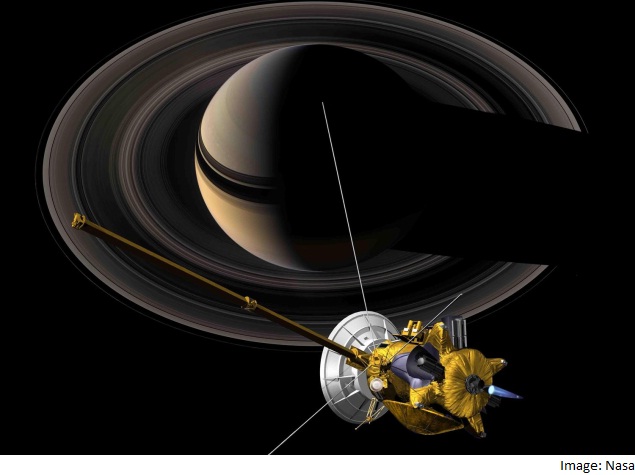
This is very similar to the wind observed coming from the Earth’s polar regions.
Like the Earth and Venus, and unlike any other moon, Titan has a rocky surface and a thick atmosphere. It is the only object in the solar system apart from the Earth to have rivers, rainfall and seas, and it is bigger than the planet Mercury.
“Titan’s atmosphere is made up mainly of nitrogen and methane, with 50 percent higher pressure at its surface than on Earth,” said study leader Andrew Coates.
“Data from Cassini Plasma Spectrometer (CAPS) proved a few years ago that the top of Titan’s atmosphere is losing about seven tonnes of hydrocarbons and nitriles every day, but did not explain why this was happening. Our study provides evidence for why this is happening,” Coates said.
Nitriles are molecules with nitrogen and carbon tightly bound together.
The research, published in the journal Geophysical Research Letters, explains that this atmospheric loss is driven by a polar wind powered by an interaction between sunlight, the solar magnetic field and the molecules present in the upper atmosphere.
“Although Titan is 10 times farther from the Sun than the Earth is, its upper atmosphere is still bathed in light.”
Unlike the Earth, Titan has no magnetic field of its own, but is surrounded by Saturn’s rapidly rotating magnetic field, which drapes forming a comet-like tail around the moon.
The team found that negatively-charged photoelectrons, spread throughout Titan’s ionosphere and the tail, set up an electrical field.
The electrical field, in turn, is strong enough to pull the positively charged hydrocarbon and nitrile particles from the atmosphere throughout the sunlit portion of the atmosphere, setting up the widespread ‘polar wind’ that scientists have observed there.
This phenomenon has only been observed on the Earth before, in the polar regions where the Earth’s magnetic field is open.
As Titan lacks its own magnetic field the same thing can occur over wider regions, not just near the poles.
A similarly widespread ‘polar wind’ is strongly suspected to exist both on Mars and Venus – the two planets in the solar system which are most Earth-like.
It gives further evidence of how Titan, despite its location in orbit around a gas giant in the outer solar system, is one of the most Earth-like objects ever studied.
[“source-gadgets.ndtv.com”]
